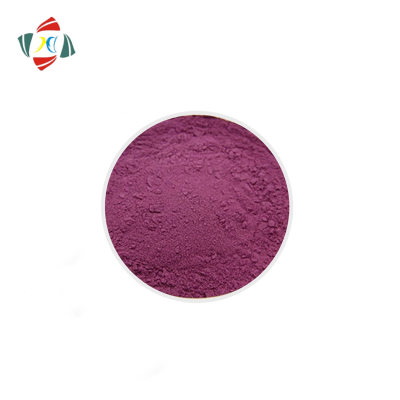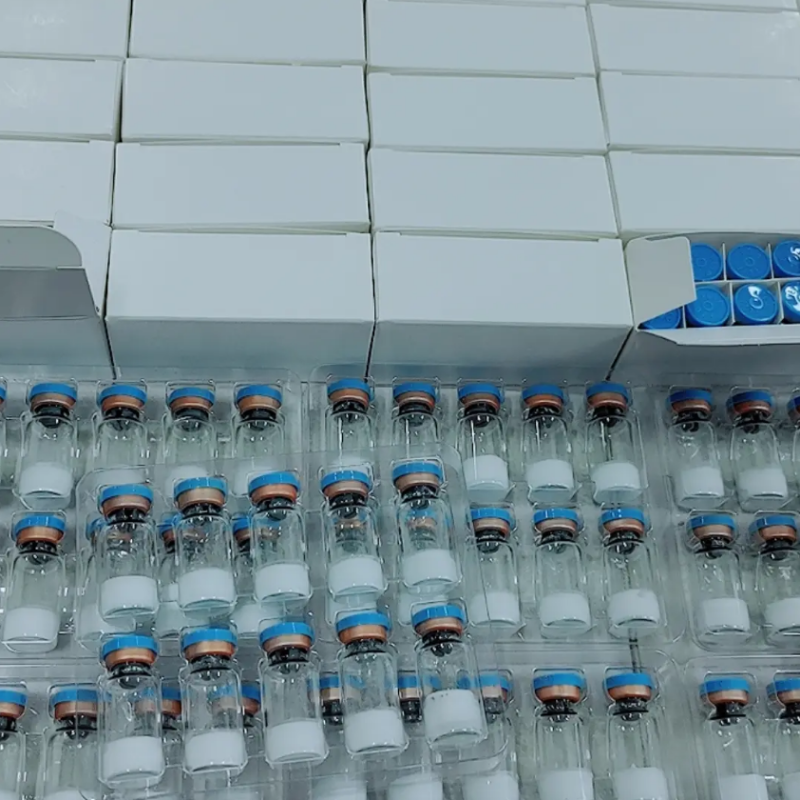-
Categories
-
Pharmaceutical Intermediates
-
Active Pharmaceutical Ingredients
-
Food Additives
- Industrial Coatings
- Agrochemicals
- Dyes and Pigments
- Surfactant
- Flavors and Fragrances
- Chemical Reagents
- Catalyst and Auxiliary
- Natural Products
- Inorganic Chemistry
-
Organic Chemistry
-
Biochemical Engineering
- Analytical Chemistry
- Cosmetic Ingredient
-
Pharmaceutical Intermediates
Promotion
ECHEMI Mall
Wholesale
Weekly Price
Exhibition
News
-
Trade Service
Connective tissue disease (CTD)-related pulmonary hypertension (PAH) is one of the challenges that rheumatologists must face, and the most common CTD leading to PAH in China is SLE, paH is a common and serious complication of SLE, SLE-related PAH The prevalence rate reached 3.8% in the registered study of the China Systemic Lupus Research Group (CSTAR), and the prevalence of SLE-related PAH was nearly 50% in china's CTD-related PAH.
On May 29th, at the 14th Oriental Cardiology Conference (OCC2020), Professor Li Mengtao from the Rheumatology Immunology Department of Concord Hospital in Beijing shared with experts the themes "Treatment Options for SLE-PAH Basic Diseases" and "The Role of Hydroxychloroquine in Immune Disease-Related Pulmonary Arterial Hypertension and The Value of Coronary Pneumonia".
Mengtao Li, a professor of treatment options for SLE-PAH underlying diseases, an important concept in SLE-PAH treatment is "standard therapy".
consensus recommends "double standard" :(1) SLE in clinical remission: SLEDAI 4, BILAG system score of C/D/E, PGA 1 (2) PAH clinical compliance should meet all of the following criteria: clinically no performance of right room failure, no fainting seizures, functional aspects, WHO heart function stable at I.-II. level, 6 minutes walking distance. 380-440m, VO2max 15ml/min/kg for cardiopulmonary exercise tests; /L (normal or near normal); imaging, right chamber structure and function normal or near normal; RHC check, right room pressure 8 mmHg, heart index (CI) s 2.5L/min/m2.
and treatment compliance can improve long-term prognosmation, the strategy of standard treatment is to select the appropriate targeted treatment according to the risk stratization.
patients with underlying inflammatory manifestations (pulp membraneitis) were treated at a higher rate of risk stratification improvement than patients with no manifestations of underlying inflammation, i.e. patients in this group were more likely to be treated with intensive treatment to achieve a prognosis for improved compliance.
Professor Li Mengtao combined a case (shown below) to explain the treatment of SLE-PAH underlying disease, including the treatment of the impact of A-strong dragon, as well as the selection of cyclophosphamide (CTX) and hydroxychloroquine (HCQ) immunosuppressants, which showed that after 4 weeks of treatment, the patient's pulmonary vascular resistance was reduced from 7.6 to 2.5WU.
In a single-center study at Beijing Concord Hospital, 110 SLE-PAH confirmed by right heart catheterization (RHC) were included, and 71 patients were treated with joint targeting, of which 48 were treated with enhanced immunosuppressive therapy (IST) and 23 with non-IST, resulting in better prognostic improvement in the strengthened IST group.
After the basic diseases and targeted treatment of patients with better results, continued to show a low-risk state, with such patients after full communication, stop targeting drugs, follow-up for more than six months, two-thirds of patients can still maintain clinical serological and hemodynamic stability.
a study on SLE-PAH in Japan (see chart below), treatment is also a large dose of hormone therapy, gradually reducing the amount, play an anti-inflammatory, immunosuppressive role, choose CTX for immunosuppression, the patient's condition can be controlled.
in addition to CTX, the available immunosuppressants are thiopental, anticophenol esters (MMF), tekmos, etc., CTX is the preferred immunosuppressant for the induction phase.
in addition to targeted drugs, the American Rheumatology Association (ACR) recommends CTX and MMF in first-line treatments.
but the following types of drug-related research and clinical evidence is not enough.
biologics, the treatment of belimu monoantigens to selectively identify and prevent free B lymphocyte stimulators in the serum is also being explored.
The history of HCQ's role in immunopathic disease-related pulmonary hypertension starts with "Quinine", where the first clinically reported antimalarial drug has been used for SLE treatment for more than 120 years;
HCQ treatment SLE mechanism is mainly two points: (1) anti-inflammatory: interference with T-cell phagocytage and antigen delivery function, anti-proliferation effect on T-cells, reduce the production of a variety of pro-inflammatory cytokines (including INF) -TNF, IL-1, IL-6 and IL-2, etc., (2) immunomodulation: blocking the interaction between Tol-like receptors (TLRs) and nucleic acid ligations and reducing innate immune activation.
compared to placebo, the relative risk of SLE recurrence was reduced by 2.5 times compared to placebo, and the risk of damage to the new system in all patients decreased by 32% (see chart below), and further research was needed to determine whether the risk of PAH could be reduced.
another cause of death in patients with
SLE is cardiovascular disease, HCQ through antioxidant stress, inhibition of T-cell activity, blocking the interaction between TLRs and nucleic acid ligands, etc. to reduce the occurrence of cardiovascular complications, whether there is a corresponding effect on PAH has not yet been determined.
HCQ in the new coronavirus pneumonia in the value of HCQ mechanism also includes anti-infection, Professor Li Mengtao reviewed the HCQ treatment of new coronavirus pneumonia (COVID-19) related literature, found that many large-scale clinical trials of critically ill patients, all believe that HCQ on COVID-19's condition did not significantly improve.
a systematic review published on May 27th, published in Ann Intern Med( Anthoscience Yearbook) also failed to reach a positive conclusion.
Li Mengtao speculated that because HCQ's effect on SLE is slow, it usually takes three months, some COVID-19 patients progress faster, 7-10 days of application can not produce significant results.
Professor Li Mengtao points out that whether HCQ can play a preventive role in COVID-19 can be a key research direction, for example, can study whether the application of HCQ can reduce COVID-19 from the state of latent infection to the state of clinical expression, can have the effect of blocking immunity and inflammatory storms.
Professor Li Mengtao concluded that in terms of SLE's organs, PAH exceeds neuropsychiatric lupus, the proportion is still rising, how to identify early first-level prevention is still a problem faced by rheumatologists, whether hydroxychloroquine may block the emergence of PAH, COVID-19 can play a preventive role also needs further study.
: . . . . . . . . . . . . . . . . . . . . . . . . . . . . . . . . . . . . . . . . . . . . . . . . . . . . . . . . . . . . . . . . . . . . . . . . . . . . . . . . . . . . . . . . . . . . . . . . . . . . . . . Li M, Zhang W, Leng X, et al. Chinese SLE Treatment and Research Group (CSTAR) registry : 1. Major clinical features of Chinese patients with systemic lupus erythematosus . Lupus, 2013, 22 ( 11 ) : 1192-1199. Hao Y J, Jiang X, Zhou W, et al. Connective tissue disease- associated pulmonary arterial hypertension in Chinese patients . Eur Respir J, 2014, 44 (4) :963-972. National Rheumatology Data Center, China Systemic Lupus Research Collaboration Group. Consensus on diagnosis and treatment of pulmonary hypertension associated with systemic lupus erythematosus in adults in China. Chinese Journal of Internal Medicine, 2015, 054 (001): 81-86. McLaughlin VV, Gaine SP, Howard LS, et al. Treatment goals of pulmonary hypertension . . . J Am Coil Cardiol, 2013, 62 (25 Suppl): D73-81. Hernandez AV, Roman YM, Pasupuleti V, Barboza JJ, White CM. Hydroxychloroquine or Chloroquine for Treatment or Prophylaxis of COVID-19: A Living System Review (published online ahead of print, 2020 May 27. Ann Intern Med. 2020;10.7326/M20-2496. doi:10.7326/M20-2496Violet Source: MedSci Original Copyright Notice: All text, images and audio and video materials on this website that state "Source: Mets Medicine" or "Source: MedSci Originals" are owned by Metz Medicine and are not authorized to be reproduced by any media, website or individual, and are authorized to be reproduced with the words "Source: Met Medical".
all reprinted articles on this website are for the purpose of transmitting more information and clearly indicate the source and author, and media or individuals who do not wish to be reproduced may contact us and we will delete them immediately.
reproduce content at the same time does not represent the position of this site.
leave a message here.







